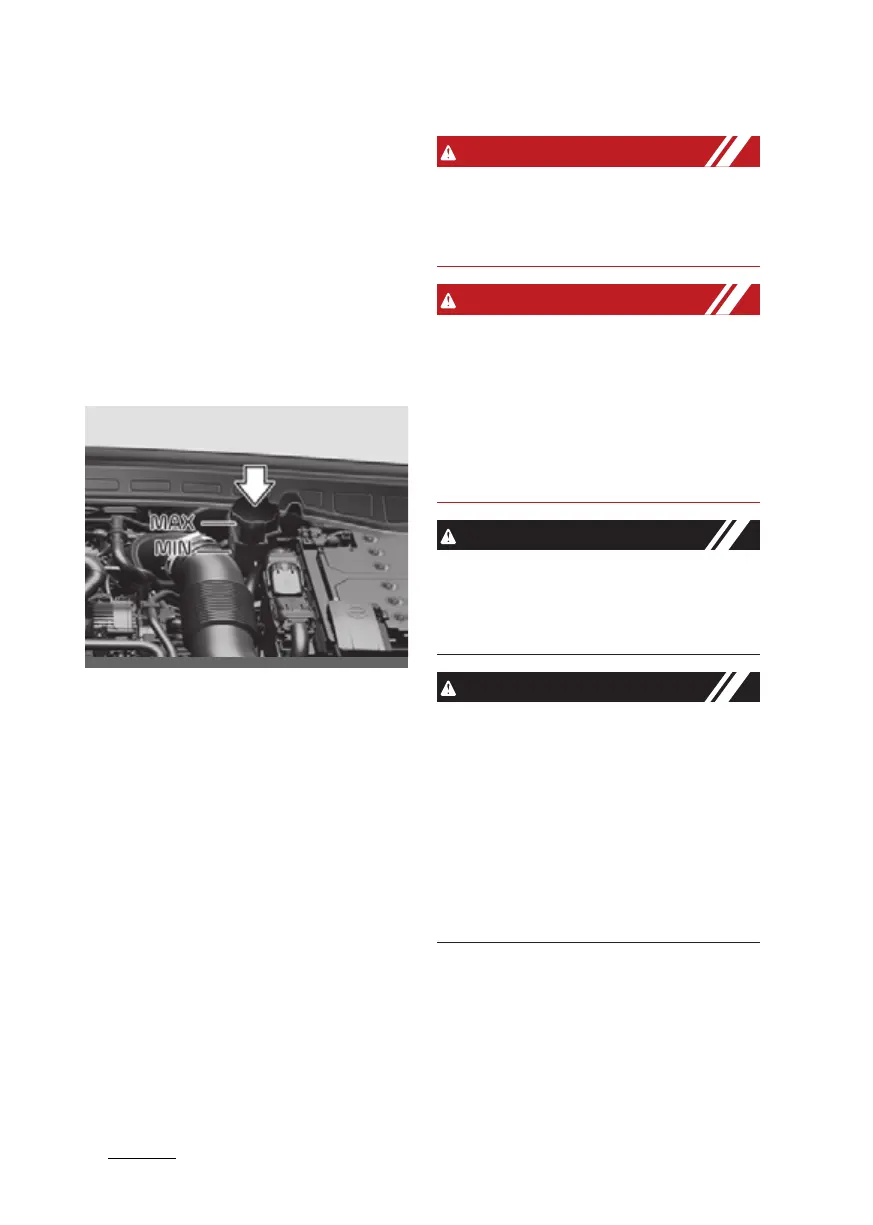Maintenance
248
Brake fluid
Brake fluid
The brake fluid acts to transmit force to
the brake when the driver depresses the
brake pedal. Brake fluid must be main
-
tained periodically to ensure that the
brakes operate smoothly.
Checking the brake fluid level
Check the fluid level in the reservoir
periodically. The fluid level should be
between MAX and MIN marks on the
side of the reservoir.
1. Before removing the reservoir cap
and adding brake fluid, clean the area
around the reservoir cap thoroughly
to prevent brake fluid contamination.
2. Periodically check that the fluid level
in the brake fluid reservoir is between
MIN and MAX. The level will fall with
accumulated mileage. This is a normal
condition associated with the wear of
the brake linings. If the fluid level is
excessively low, have the brake sys
-
tem checked by an authorized Kia
dealer.
Use only the specified brake fluid. (Refer
to "Recommended lubricants and capac
-
ities" on page 9-9.)
Never mix different types of fluid.
In the event the brake system requires
frequent additions of fluid, the vehicle
should be inspected by an authorized
Kia dealer.
When changing and adding brake fluid,
handle it carefully. Do not let it come in
contact with your eyes. If brake fluid
should come in contact with your eyes,
immediately flush them with a large
quantity of fresh tap water. Have your
eyes examined by a doctor as soon as
possible.
Proper fluid
Only use brake fluid in the brake system.
Even small amounts of improper fluids
can cause damage to the brake system.
Brake fluid
Do not allow brake fluid to contact the
vehicle's body paint, as paint damage
will result.
The brake fluid constantly absorbs mois
-
ture from the air. This lowers the boiling
point of the brake fluid. If the boiling
point is too low, vapor pockets may form
in the brake system when the brakes are
applied hard.
Brake fluid, which has been exposed to
open air for an extended time should
never be used as its quality cannot be
guaranteed. It should be disposed of
properly.

